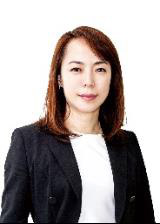Lee Hsun Lecture Series
Topic: New Challenges with Ceramic Additive Manufacturing Technology
Speaker: Prof. Hui-suk Yun
Advanced Bio and Healthcare Materials Research Division,Korea Institute of Materials Science,Changwon,Korea
Time: 10:00-12:00, (Fri.) Oct. 24th,2025
Venue: Room 468,Lee Hsun Building,IMR CAS

Abstract:
Additive manufacturing (AM) is a fabrication process that uses digital information from a computer-aided design file to stack two-dimensional (2D) layers of various materials to produce 3D objects, without requiring part-specific tooling. The use of AM technology in ceramics has attracted significant attention because it can overcome the serious limitation of controlling the complex 3D structure and has advanced remarkably in the last decade. Stereolithography is a representative ceramic AM technology that can produce complex 3D structures with high structural accuracy and precision by using a projector's light source to cure photocurable polymers mixed with ceramic particles. Despite numerous studies exploring the use of stereolithography for producing complex 3D ceramic devices, significant limitations and challenges persist. The optimization of the photocurable ceramic slurry is a critical condition and should be carefully designed after considering the structural requirements of the final product, both the density and reflective index of the raw materials, colors, and post-thermal treatment conditions to obtain ceramic devices with high structural integrity and accuracy after sintering. Meanwhile, the use of multiple materials is both important and difficult. Various approaches should be considered to match the shrinkage behavior of each material, which will help avoid separation, crack formation, or delamination.



